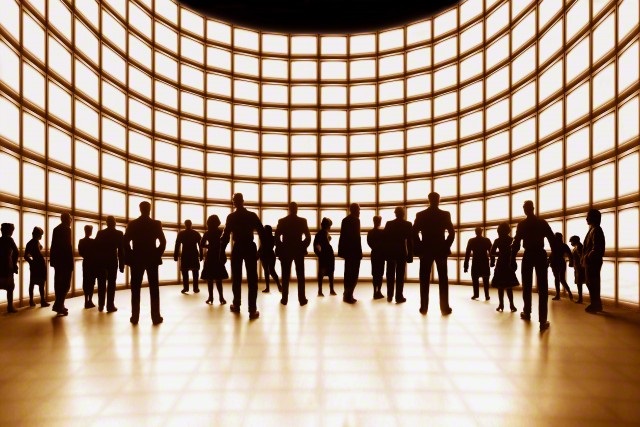Cross Media Keys Can Optimize for Behavior

Being in the right place at the right time is all about luck, correct? If that’s the case, then why do people also say, “Luck favors the prepared”? We all know this, but what it means to me is that being prepared allows you to make the most of whatever happens in a place and time. Now, why be prepared for something, unless you want to slant the outcome to your favor and better achieve success in your endeavor? If we think like Covey, then we have to begin with the end in mind.
Consider those universal truths from above, and ask yourself: When I choose a budget allocation to market my product or service, what is it that I want someone to do when they see my ad? Well, conventional thinking would have you split your ad spend based on a cascading ROI of each independent media type. And then apply a media mix model against the desired demographic to maximize available market inventory, with cost and return for each type, so that each of them hits their natural limit to your internal KPIs.
That’s good thinking. It works. It maximizes each type’s individual effectiveness based on the inherent characteristics of each type. Then after application, marketers can A/B test, retarget and remarket to determine what individuals respond to best in what situations as optimization to enhance returns. But, it still only considers one media type at a time.
Optimization occurs after you start getting results, determined from what success feels like, after you determine what you want a consumer to do – whether it be a call or visit to your store, an online purchase, or just even an awareness that you exist. Usually, they also happen individually. You target your TV to reach people who would be watching a particular show, and could include a subdomain URL or phone number in the ad. Or, you target social media profiles -- and those ads follow you from phone to desktop hoping you “slow your scroll” enough to click through. Again, great thinking, but it doesn’t get in front of the question.
So amongst all of these varied media sources, toolsets, and techniques, why do we hear so little about media coordination? What happens when you put two distinctly different media sources together around an idea of “priming” or “aiding recall and recognition” to take that specific action that denotes success? Probably, this thinking doesn’t get much airtime, because we don’t actually know when someone is ingesting online and offline media. We don’t know when they are reading the paper or when they are watching TV and searching online at the same time. We resort to demographic targeting for reaching those different audiences when we think they are most likely to ingest our message; but it isn’t planned to be compound. What could be a differentiating factor in getting the message to the right people, in a place and time when it will be contextually relevant?
Location.
Based on today’s technology, we know when someone is somewhere. Not in a very personal way, but in an anonymous way -- and that is very powerful for different types of media and great intelligence for brands. Recently, Outfront launched its Outfront Mobile Network, designed to coordinate the display of OOH advertising, with mobile ads delivered through apps on a user’s device. The priming effect that this sort of engagement delivers is seen in recent studies, like the one published by Neuro-Insight and Ocean Outdoor.
This puts us in front of the discourse. When someone is at X location, we want them to think about Y. It may be based on proximity, or context, but the idea is to ensure that the message is targeted to reinforce thinking in those locations as a common key; that will resonate for someone to take an action. What we see repeatedly, taking the approach of planning geofences around OOH and other key locations, are data points higher than what would be considered industry norms for mobile. The CTR seems to be roughly between the 0.1% to 0.6% amid the many permutations and reports online for CTR depending on what you read. We currently view SAR (Secondary Action Rate) as taking action to directly contact a business or go to their website from a hosted landing page; those percentages of follow through are quite good.
While we are in the early days of implementation, campaigns that are in flight or have completed their run are showing interesting characteristics. We see results where CTR and SAR both increase over time and at different accelerated rates. (SAR increases 5x the rate of CTR, counter to the idea of creative getting “tired” over time.) Certain business offers cause SAR to be 10x the CTR or greater, and another shows how the coordination of OOH and non-OOH assets can drive both behavior and volume together (that priming effect above) in meaningful ways to results. An early read would say that a strong correlative lift (as noted in the Neuro-Insight/Ocean Outdoor study) does exist, and now understanding how to best use creative and targeting for success with OOH as more data is collected.
Image at top courtesy of Corbis. The opinions and points of view expressed in this commentary are exclusively the views of the author and do not necessarily represent the views of MediaVillage/MyersBizNet management or associated bloggers.


